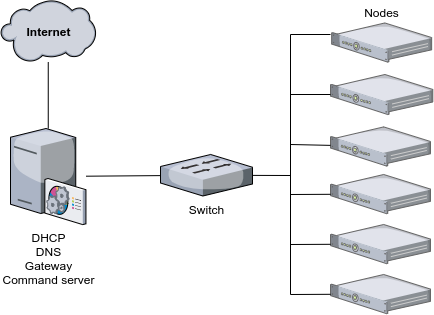Before buying all the nodes of the cluster, it is worth testing a unit. The short list of candidates was quickly drawn:
Rummaging IT fields since the 8-bits personal computers era.

Rummaging IT fields since the 8-bits personal computers era.
Before buying all the nodes of the cluster, it is worth testing a unit. The short list of candidates was quickly drawn:
Chinese manufacturers offer a large choice of low-cost, fanless, servers. I chose one with more than enough power and four Ethernet plugs. Only two RJ45 connectors were needed but additional ones allow me to split the cluster in two sub-nodes and test consequences of inter-networks communication. For example, a kubernete-to-kubernetes cluster connection might be tested.
Directly powering all components would require to plug 6 (cluster nodes) + 1 (cluster server) + 1 (switch) = 8 wires! Added to the cable mess it would imply inefficient powering with at least 6 low-cost power adapters.
The structure of the mini cluster should stay simple to ease build and setup. The following hardware architecture should be just enough:

minicluster hardware architecture
After years of hesitation, lack of time and also a little bit of procrastination, I finally decided to launch my blog.